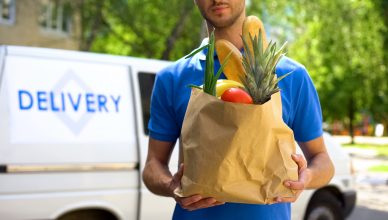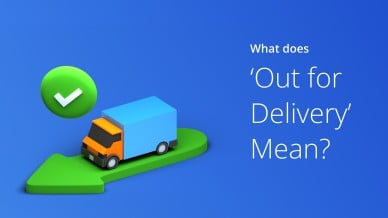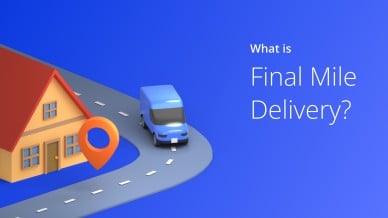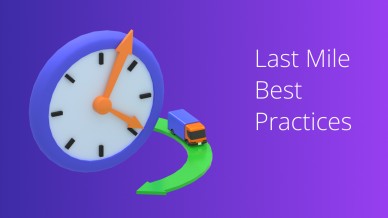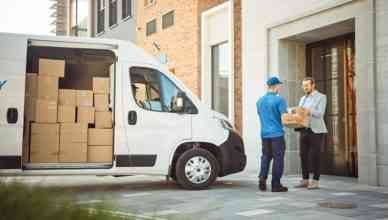It’s a no-brainer that a superior last-mile experience helps engage and retain customers and encourages repetitive purchases. In fact, reports say that happy customers pay higher delivery charges for fast delivery service and purchase more frequently. But, making a seamless last-mile delivery is easier said than done.
The last-mile is the most expensive link in the supply chain and the costs are variable. This means that, as the delivery volume and demands for faster deliveries go up, so too does the cost of providing last-mile services. So, it impacts your profit margins.
According to Capgemini, last-mile costs could account for 41% of the total supply chain expenses; this is more than double any other category of spending, including warehousing or packaging.
Also, last-mile deliveries reduce the profits of many logistics companies, as they subsidize deliveries to gain a market share. According to a survey by Statista, 35% of the respondents said that cutting down on logistics expenses is the main challenge they have in offering last-mile delivery.
Yet, you cannot stop offering a faster delivery service if you want to stay in the race. Reports say that 55% of your customers could switch to a competitor for much faster delivery service.
You can also not afford a single late delivery. According to a survey by Voxware, 62% of the respondents are unlikely to place an order if their purchase will not be delivered on time. That’s not good.
So, how can you overcome the last-mile delivery challenges?
How can you make faster deliveries to satisfy your customers, while reducing last-mile delivery costs?
We share four tips below.
Want To See For Yourself How Route4Me Can Boost Your Profits?

#1 Automate Your Warehouse Operations
You can automate your warehouse operations to reduce costs, fulfillment errors, and order-to-dispatch times. According to reports, depending on the automation type used, you can improve your profit margin by at least 8% through lower fulfillment expenses and higher throughput.
For example, most warehouse costs go to human labor and most labor time is spent walking around to pick up objects. The pick-and-pack process becomes increasingly challenging as the volume and traffic in your warehouse grow with business growth. So, to increase productivity and efficiency, you must decrease the number of trips your employees make in your warehouse.
An automated technology solution like a route planner will help your employees locate orders more easily, no matter where they are in your warehouse. Such software comes with an advanced algorithm that uses mapping data to create efficient routes that your employees should take.
You just need to describe the number of items and the item types that are located in each part of your warehouse, bin, or cabinet; the route planner app will then route your robotic loader or human operator to the nearest inventory pick location.
An advanced route optimizer supports multiple pick-and-pack strategies, both single-order picking and multi-order batch picking, order consolidation, and more.
Read our article on how to automate warehouse operations for your retail eCommerce business and improve the efficiency of your final-mile deliveries to learn more.
#2 Optimize Your Routes
Poor routes mean delayed deliveries, unhappy customers, and loss of revenue and profits.
Can you afford that?
This is why route optimization is critical for making seamless and cost-effective final-mile deliveries.
Well-planned routes will help your drivers make more stops and deliveries as they won’t be stuck in traffic or facing other bottlenecks on the road.
Using pen and paper to optimize routes is never ideal because there are too many moving parts that need to be considered while planning routes that can’t be factored in manually. Apple Maps or Google Maps route planner for deliveries cannot help either.
So, you should use a last-mile delivery software that can automate your vehicle routing and scheduling process, without any effort on your part.
All you need to do is upload the list of customer addresses and set some parameters, and the route planner will provide you with well-optimized accurate routes with turn-by-turn directions.
The routes will even factor in weather, traffic, load, weight, one-ways, avoidance zones, sunrise and sunset times, and more that could affect your routes.
This whole process takes just 30 seconds!
Route planners even come with a geocoding feature that automatically corrects wrong addresses. So, you never need to worry about the accuracy of your customer addresses, and failed deliveries will be a thing of the past.
A last-mile delivery app also helps you assign a balanced workload to your drivers, ensuring they are all well-equipped with deliveries and no one is overworked or underworked and you’ll not have any empty vehicles doing the rounds.
The best last-mile delivery solutions even come with a GPS tracker that helps with last-mile delivery tracking. You can track your drivers’ activities on the road in real-time to ensure that they do not deviate from the scheduled assignments, drive aggressively, or do anything that could jeopardize them or your business.
Also, multi-stop route planners bolster the drivers’ safety. For example, you would know whenever a driver gets stuck on the road due to a road mishap or a vehicle breakdown. You can then send immediate road-side assistance. This would also help you learn which routes you need to re-optimize to make sure that no deliveries are affected.
That’s not all. There are many other features offered by an advanced delivery route planner. These include the following:
- eSignature for proof of delivery
- Reporting and analytics to track performance and expenses
- Telematics gateway
- Geofencing to automate check-ins and check-outs
- Driver breaks to reduce driver fatigue and improve efficiency
Read our article on the nine benefits of investing in dynamic technology to learn more.
#3 Find a Scalable and Collaborative Delivery Workforce
The sharing economy might have transformed the delivery landscape, but many retailers find the emerging field of alternative delivery providers isn’t sustainably meeting business needs. They have poor unit economics, strict size limitations, and limited flexibility.
This is why you need to find a last-mile delivery workforce that is dynamic, can scale up based on customer demand and has a national footprint. Also, it shouldn’t require you to invest millions in infrastructure or headcount.
You can go for a collaborative delivery model. Such a model will help you leverage your existing resources, such as customers, employees, and people in the local community within close proximity to the warehouse, as flexible and more affordable workforce options as compared to other delivery options.
Not only will this help you increase conversions and customer satisfaction it will also increase speed-to-market for last-mile delivery.
#4 Make Customers Aware of Their Package Statuses
Another big challenge faced with last-mile is failed deliveries. Reports say that 63% of all unsuccessful deliveries are due to customer’s unavailability to receive the package.
Every failed delivery adds extra costs to the total logistic operation. This includes re-delivery time, transportation, fuel, and additional time in storage/warehouse. And, if the delivery fails permanently, further expenses are incurred in the return process to the provider and customer support.
According to a report, 4.7% of deliveries fail which costs $16.58 per failed delivery in the U.S., and the total annual expenses for unsuccessful deliveries is over $200,000 in the U.S. That’s massive!
But, what can you do then?
Well, you can call up your customers whenever their packages are out for delivery to give them an estimated time frame. You can make reminder calls as well; however, such repeat calls could simply irritate some customers.
A better solution would be adopting delivery scheduling software that can simplify the notification process.
Ideally, the best delivery route planners come with a customer alerting and notification feature that helps you inform your customers through email and SMS whenever their packages are nearby. In this way, they can make themselves available. The best part is that you don’t need to do anything manually.
Route4Me even comes with a customer portal feature that helps your customers track their package statuses on their own.
So, how do you overcome your last-mile delivery challenges? Do you have any questions? Please feel free to leave your comments below.
Want To See For Yourself How Route4Me Can Boost Your Profits?


